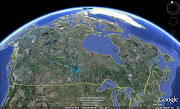Rural and Regional Trends, January 2013
Indicators to monitor structure and performance in rural Canada
Ray D. Bollman
Employment in rural and small town Canada has been declining since September, 2012. In December 2012, employment growth was above the national employment growth rate in 32 economic regions.
Download PDF version.
RRT main page.
--------------------------------------------------------------------------------------
Highlights
• Employment in rural and small town Canada has been declining since September, 2012
• In December 2012, employment growth was above the national employment growth rate in 32 economic regions
--------------------------------------------------------------------------------------
Employment in rural and small town Canada has been declining since September 2012
Up to recently, fluctuations in rural and small town (RST) employment have mirrored the fluctuations in larger urban centres.
RST employment has been declining for four consecutive months, since September 2012 (Figure 1).
RST employment has continued to increase in the goods-producing sectors but is now declining across a number of the services sectors.
The decline in RST employment has been most noticeable in RST Ontario (Table 1).
Figure 1 (PDF)

• Download the data of this chart in CSV format.
• Download data from CANSIM.
Table 1 (PDF)
Number employed and percent change by type of geographic area, Canada and Provinces

• Download the data of this table CSV format.
• Download data from CANSIM.
In December 2012, employment growth was above the national employment growth rate in 32 economic regions
In December 2012, 32 economic regions (out of 73 economic regions in Canada) reported employment growth above the national rate of employment growth (1.57%, compared to the same month in the previous year, using a 3-month moving average). These regions are “leading” Canada’s job growth (Map 1).
The top five leading regions in term of employment growth are:
• 8.7% Montérégie Economic Region, Quebec
• 7.7% Saguenay-Lac-Saint-Jean Economic Region, Quebec
• 7.7% Northeast Economic Region, British Columbia
• 6.9% Bas-Saint-Laurent Economic Region, Quebec
• 6.8% Laval Economic Region, Quebec
The bottom five lagging regions in term of employment growth are:
• -8.1% Stratford-Bruce Peninsula Economic Region, Ontario
• -8.4% Lanaudière Economic Region, Quebec
• -9.2% North Coast and Nechako Economic Region, British Columbia
• -11.4% Muskoka-Kawarthas Economic Region, Ontario
• -12.7% Mauricie Economic Region, Quebec
Six economic regions have shown employment growth above the national rate for 12 consecutive months:
• Saskatoon-Biggar Economic Region, Saskatchewan
• Cariboo Economic Region, British Columbia
• Edmonton (and area) Economic Region, Alberta
• Calgary (and area) Economic Region, Alberta
• Kootenay Economic Region, British Columbia
• North Shore Economic Region, Nova Scotia
Four economic regions have shown employment decline for 12 consecutive months:
• Gaspésie-Îles-de-la-Madeleine Economic Region, Quebec
• Saint John-St. Stephen Economic Region, New Brunswick
• Parklands (incl. Dauphin) and North Economic Region, Manitoba
• North Coast and Nechako Economic Region, British Columbia
Map 1 (PDF)
Employment growth performance relative to the national rate of employment growth, December, 2012

Note:
Employment change is calculated by comparing the current month with the same month in the previous year, using a 3-month moving average.
“Leading” indicates employment growth above the national rate of employment growth.
“Modest” indicates employment growth, but the growth is less than the national rate of employment growth.
“Lagging” indicates employment decline.
Source: Statistics Canada. Labour Force Survey. CANSIM Table 282-0060.
• Read instructions for uploading the XML files on the CID mapping system.
• Download XML file to customize Map 1 on the CID (and generate performance maps for October and November 2012).
• Download XML file to generate percentage change maps for the months of October, November, and December 2012.
• Download the data of the maps in CSV format.
• Download data from CANSIM.
--------------------------------------------------------------------------------------
About Rural and Regional Trends
The purpose of Rural and Regional Trends (RRT) is to facilitate the use, mapping and interpretation of selected timely local economic indicators.
RRT is issued quarterly and will provide the information to address the following questions:
- What are the most recent trends for key local economic indicators of your region?
- How do these trends compare with those of other regions across Canada?
RRT provides summary charts and ready-to-use maps and data. You can use these maps to visualize local economic trends or easily upload the data on the Community Information Database to customize your maps.
RRT is distributed free of charge on the Canadian Rural Research Network (CRRN) and is intended to stimulate debate and further analysis and use of local economic indicators.
RRT is authored by Ray Bollman. For further information and analysis of local economic indicators contact Ray at RayD.Bollman@sasktel.net. Ray recently retired as Chief of the Rural Research Group at Statistics Canada and as Editor of Statistics Canada’s Rural and Small Town Canada Analysis Bulletins.
About the Canadian Rural Research Network: The CRRN is a vibrant, free and comprehensive on-line community of rural research stakeholders that facilitates information sharing by means of innovative networking approaches. Visit the CRRN web site and subscribe to the CRRN social media (FB, LIn, Tw, RSS) to keep up to date with rural research.
Republishing and redistribution: You can republish and redistribute RRT online or in print for free. You just have to credit the author and the CRRN and link to the online version of RRT on the CRRN.
--------------------------------------------------------------------------------------







